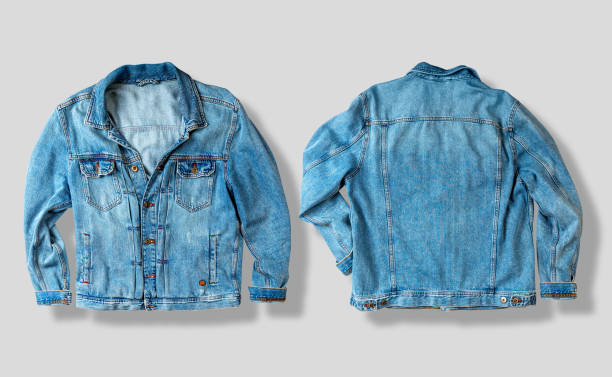Finding your best colors is an empowering journey that can enhance your wardrobe and boost your confidence. Color theory provides invaluable insights into how colors interact and how they can be harmonized with your skin tone, eye color, and hair color. Through understanding various aspects of color theory, you can identify the shades that flatter you the most, enabling you to make informed choices in fashion, makeup, and personal branding. In this article, we will explore the essentials of color theory and provide practical steps for discovering your best colors.
Understanding Color Theory
Color theory is the foundation upon which artists and designers base their color choices. It encompasses a set of principles that explain how colors interact with one another, their emotional and psychological impacts, and their applications in various fields. At its core, color theory categorizes colors into three primary types: primary, secondary, and tertiary. Primary colors (red, blue, yellow) cannot be created by mixing other colors, secondary colors (green, orange, purple) are formed by mixing primary colors, and tertiary colors are a mix of primary and secondary colors. Understanding these categories lays the groundwork for exploring color harmonies—combinations of colors that create visual interest and balance.
Identifying Your Undertones
To find your best colors, you must first identify your hair, skin, and eye undertones. Undertones are the subtle colors beneath the surface that affect your overall color appearance. They are generally classified into three categories: warm, cool, and neutral. Warm undertones often have a golden or peachy hue, cool undertones lean towards blue or pink, and neutral undertones exhibit a mix of both. Here are some steps to help you determine your undertone:
- Observe your veins: If they appear green, you likely have warm undertones; if blue, you have cool undertones.
- Consider how your skin reacts to the sun: A golden tan suggests warm undertones, while a pinkish burn indicates cool undertones.
- Conduct a jewelry test: Gold jewelry typically complements warm undertones, while silver jewelry suits cool undertones.
Recognizing your undertones will guide you in selecting colors that enhance your natural beauty rather than clash with it.
Exploring the Color Wheel
The color wheel is an essential tool in color theory that visually represents the relationships between colors. By using the color wheel, you can create combinations that either complement or contrast effectively. Complementary colors lie opposite each other on the wheel (e.g., blue and orange) and create vibrant looks when paired. Analogous colors are next to each other and produce a harmonious appearance (e.g., green, blue-green, blue). Meanwhile, triadic colors form a triangle on the wheel (e.g., red, yellow, blue) for a balanced yet dynamic effect. To find your best colors, consider experimenting with these combinations:
- Wear shades from the same family for a monochromatic look.
- Pair contrasting colors for a bold statement.
- Mix warm and cool colors to discover unique combinations.
Exploring the color wheel expands your understanding of how colors can play off one another, enabling you to create visually appealing outfits.
Choosing Your Best Color Palette
Once you’ve identified your undertones and familiarized yourself with the color wheel, it’s time to develop your personalized color palette. A color palette is a curated selection of colors that complement each other and align with your individual style. Start by selecting a dominant color that resonates with you and reflects your personality. Then, build upon this base color by adding complementary, analogous, and neutral shades. Here’s a straightforward approach for creating your color palette:
- Choose a favorite color that feels authentic to you.
- Select one or two complementary colors to broaden your outfit options.
- Incorporate neutrals for grounding elements that allow your colors to shine.
With a clear color palette in hand, you can confidently coordinate your wardrobe, ensuring that your choices harmonize beautifully together.
Integrating Colors into Your Wardrobe
Now that you’ve discovered your best colors, the next step is to integrate them into your wardrobe. Begin by evaluating your current clothing items and accessories to identify which pieces align with your newly established palette. Gradually replace items that don’t fit your color scheme with those that do. This process can involve shopping for new clothes, mixing pieces you already own, or even revamping accessories like scarves and handbags. Here are some tips to effectively integrate your colors:
- Start with basics: Invest in core clothing items in your best colors, such as tops and bottoms.
- Accessorize creatively: Use bags, shoes, and jewelry to add splashes of your best colors.
- Be bold: Don’t hesitate to mix and match items from your palette to create fun and interesting looks.
By incorporating these strategies, you’ll curate a cohesive wardrobe that brings joy and confidence to your everyday style.
Conclusion
Finding your best colors using color theory can transform the way you express yourself through fashion and personal style. By understanding your undertones, exploring the color wheel, and creating a personalized color palette, you can choose shades that enhance your natural beauty and reflect your personality. Integrating these colors into your wardrobe will empower you to curate outfits that not only look great but also make you feel confident. Engage with color theory, have fun experimenting, and enjoy the beautiful impact that color can have on your life!
FAQs
1. How do I know if I have warm or cool undertones?
You can determine your undertone by examining your veins (green suggests warm; blue indicates cool) or by considering how your skin reacts to the sun—golden tans signal warm undertones while pink burns indicate cool.
2. Can I wear both warm and cool colors?
Absolutely! Many people can wear a mix of both warm and cool colors. Focus on those shades that flatter your complexion and create balance in your overall look.
3. How can I apply color theory to my makeup?
Color theory can guide your makeup choices by suggesting shades that complement your skin tone and eye color. Utilize similar principles to select eyeshadows, blushes, and lip colors that enhance your features.
4. Can I change my color palette seasonally?
Yes! It’s common for individuals to adapt their color palettes with the changing seasons. Feel free to experiment with different hues that align with seasonal trends or your mood.
5. Where can I find inspiration for my color palette?
Inspiration for your color palette can be found in nature, artwork, fabric swatches, and online platforms like Pinterest. Take notes on colors that speak to you and consider how they exist together.


